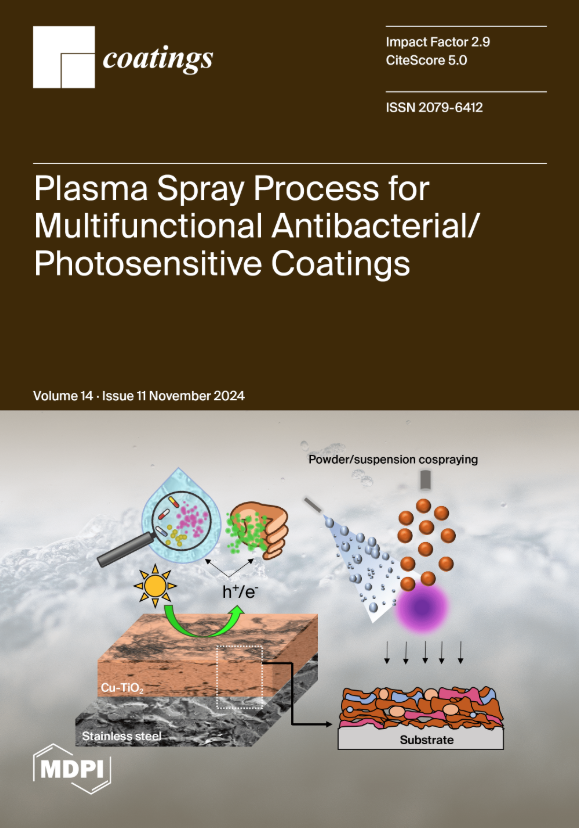利用可解释的人工智能见解,以数据驱动优化等离子电解氧化(PEO)涂层
IF 2.8
3区 材料科学
Q2 MATERIALS SCIENCE, COATINGS & FILMS
引用次数: 0
摘要
在开发轻质合金的保护性和功能性陶瓷涂层方面,PEO 是一种前景广阔的表面技术。尽管 PEO 技术具有耐磨性、耐腐蚀性和生态友好性等令人感兴趣的优点,但其相对较高的能耗限制了该技术的工业应用。本研究通过机器学习(ML)探索新型 PEO 工艺的开发和优化,以改善涂层厚度。为此,研究人员采用了随机森林和 XGBoost 等 ML 模型,根据关键工艺变量(频率、电流密度和电解质成分)预测所开发 PEO 涂层的厚度。将所用电解液的成分纳入模型后,预测性能明显提高。此外,夏普利值确定脉冲频率和电解液中的二氧化钛浓度是影响最大的变量,数值越大,涂层厚度越厚。残差分析显示出一定的异方差性,这表明需要增加高厚度的样品来提高模型的准确性。这项研究揭示了人工智能(AI)驱动的 PEO 工艺优化的潜力,它可以为更高效、更具成本效益的工业应用铺平道路。研究结果进一步强调了将频率和二氧化钛浓度等变量之间的相互作用整合到加工操作设计中的重要性。本文章由计算机程序翻译,如有差异,请以英文原文为准。
Data-Driven Optimization of Plasma Electrolytic Oxidation (PEO) Coatings with Explainable Artificial Intelligence Insights
PEO constitutes a promising surface technology for the development of protective and functional ceramic coatings on lightweight alloys. Despite its interesting advantages, including enhanced wear and corrosion resistances and eco-friendliness, the industrial implementation of PEO technology is limited by its relatively high energy consumption. This study explores the development and optimization of novel PEO processes by means of machine learning (ML) to improve the coating thickness. For this purpose, ML models random forest and XGBoost were employed to predict the thickness of the developed PEO coatings based on the key process variables (frequency, current density, and electrolyte composition). The predictive performance was significantly improved by including the composition of the used electrolyte in the models. Furthermore, Shapley values identified the pulse frequency and the TiO2 concentration in the electrolyte as the most influential variables, with higher values leading to increased coating thickness. The residual analysis revealed a certain heteroscedasticity, which suggests the need for additional samples with high thickness to improve the accuracy of the model. This study reveals the potential of artificial intelligence (AI)-driven optimization in PEO processes, which could pave the way for more efficient and cost-effective industrial applications. The findings achieved further emphasize the significance of integrating interactions between variables, such as frequency and TiO2 concentration, into the design of processing operations.
求助全文
通过发布文献求助,成功后即可免费获取论文全文。
去求助
来源期刊

Coatings
Materials Science-Surfaces, Coatings and Films
CiteScore
5.00
自引率
11.80%
发文量
1657
审稿时长
1.4 months
期刊介绍:
Coatings is an international, peer-reviewed open access journal of coatings and surface engineering. It publishes reviews, research articles, communications and technical notes. Our aim is to encourage scientists to publish their experimental and theoretical results in as much detail as possible. There is no restriction on the length of the papers. Full experimental and/or methodical details must be provided. There are, in addition, unique features of this journal:
* manuscripts regarding research proposals and research ideas will be particularly welcomed
* electronic files or software regarding the full details of the calculation and experimental procedure - if unable to be published in a normal way - can be deposited as supplementary material
 求助内容:
求助内容: 应助结果提醒方式:
应助结果提醒方式:


